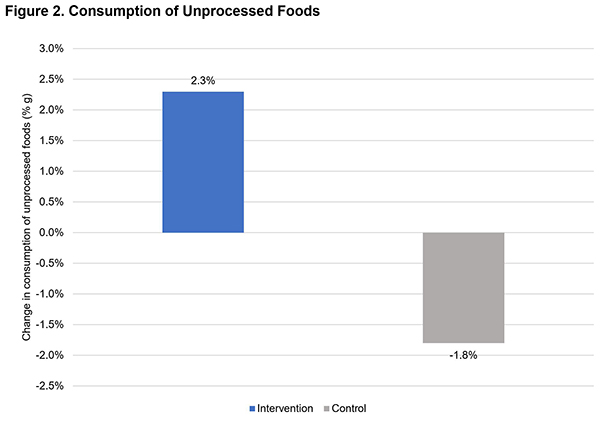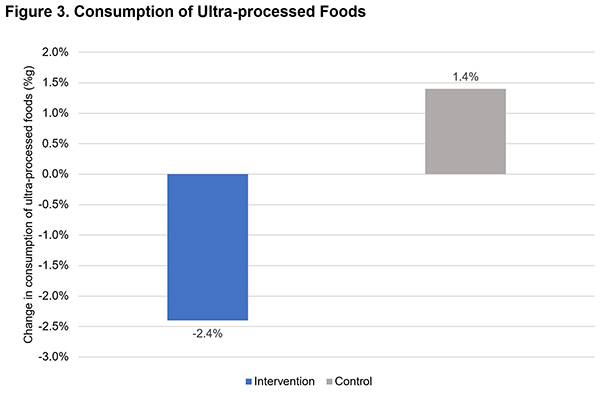Program Synopsis
Designed to help low-income Hispanic students in third through fifth grades increase healthy eating habits, this intervention provides an outdoor garden at school; and student and parent lessons in gardening, nutrition, and cooking. The study showed increases in consumption of vegetables and unprocessed food and decreases in consumption of ultra-processed foods.
Program Highlights
Program Materials
Preview and order the materials from the developer
Program Scores
The Need
Childhood obesity is a problem in the United States, putting children and adolescents at risk for poor health and psychological conditions (e.g., bullying, low self-esteem, and anxiety). People with obesity are at higher risk of health problems such as high blood pressure, high cholesterol, type 2 diabetes, breathing problems (e.g., asthma and sleep apnea), joint problems, and many types of cancer (e.g., cancer of the breast, pancreas, and colon).
About one in five children are affected by obesity. The prevalence of childhood obesity is highest among Hispanic children (26.2%) compared with other ethnic groups. Interventions are needed to improve dietary behaviors in childhood and reduce obesity, especially for populations disproportionately affected by the disease.
The Program
Texas Sprouts is a 1-year, school-based gardening, nutrition, and cooking intervention designed to increase healthy eating habits among low-income Hispanic students in third through fifth grades. A social ecological-transactional model was used to inform the Texas Sprouts program, and lessons are designed to improve a variety of diet-related psychosocial constructs, including nutrition, gardening, cooking knowledge, self-efficacy, attitudes, as well as a child’s willingness to try (and preference for) fruits and vegetables. The program provides a garden for the school intended to improve food insecurity and encourage increased vegetable intake.
The first component in the intervention is establishing a Garden Leadership Committee, a committee of stakeholders at the school (e.g., teachers, parents, community members) that leads the effort to build and maintain the garden. The garden includes raised vegetable beds, in-ground native and herb beds, a large shed for tools and materials, a whiteboard, and seating for classes. The produce grown in the garden depends on the local conditions and includes culturally relevant foods (e.g., tomatoes, peppers, and cilantro).
Next, full-time experienced and trained nutrition/garden educators deliver lessons to students and their parents over the course of the school year. The educators have an educational background in horticulture, nutrition, or public health and at least 3 years of experience teaching nutrition and gardening lessons to children. The Texas Sprouts curriculum includes the following components:
-- Student lessons: Students receive 18 1-hour garden and nutrition lessons as part of their normal school day. Each lesson includes either a taste test of food from the garden or a cooking activity. The student curriculum is culturally tailored to Hispanic children and includes relevant recipes, content, and activities. Educators follow a Student Educator Guide, and students receive a Student Workbook. Students learn how to plant and harvest seasonal fruits, vegetables, and herbs, and how to prepare meals that are a part of their Hispanic culture.
-- Parent lessons: Parents receive 9 1-hour garden and nutrition lessons scheduled at their convenience. Each lesson includes a cooking component. The Parent Workbook is available in both English and Spanish. The content parallels the student curriculum and includes topics such as the importance of family eating, healthy shopping, and increasing access to healthy foods. Educators follow a Parent Educator Guide.
Community Preventive Services Task Force Finding
 This program uses the following intervention approach for which the Community Preventive Services Task Force finds insufficient evidence: school-based programs promoting nutrition and physical activity (Diet/Nutrition). Insufficient evidence means the available studies do not provide sufficient evidence to determine if the intervention is or is not effective. This does not mean that the intervention does not work. It means that additional research is needed to determine whether the intervention is effective.
This program uses the following intervention approach for which the Community Preventive Services Task Force finds insufficient evidence: school-based programs promoting nutrition and physical activity (Diet/Nutrition). Insufficient evidence means the available studies do not provide sufficient evidence to determine if the intervention is or is not effective. This does not mean that the intervention does not work. It means that additional research is needed to determine whether the intervention is effective.Time Required
-- For the students, 18 1-hour lessons are delivered throughout the school year as part of the normal school day.
-- For the parents, 9 1-hour lessons are taught about once per month during the school year.
-- Time is required from teachers, parents, and community members to build and maintain the garden.
Intended Audience
The intervention is intended for low-income Hispanic students in third through fifth grades and their parents.
Suitable Settings
The program is suitable for implementation in school settings.
Required Resources
Required resources to implement the program include the following:
-- Texas Sprouts program website
For costs associated with this program, click on Contact Program Developer on the Program Materials page.
About the Study
In this cluster randomized controlled trial, 16 elementary schools were randomly assigned to the intervention group receiving the Texas Sprouts intervention (8 schools, n=1,711 students in third through fifth grades), or to the control group receiving the delayed intervention (8 schools, n=2,528 students in third through fifth grades). Schools were eligible to participate in the study if they had a high proportion of Hispanic students (>50%), had a high proportion of students participating in the free and reduced lunch program (>50%), were located within 60 miles of the University of Texas at Austin campus, and had no existing garden or gardening program.
All third- through fifth-graders in the intervention schools received the in-school curriculum. Students and parents were recruited for the study through school events, flyers, and class announcements. The intervention group included 1,412 students, and the control group included 1,723 students. The average age of students in the study was 9.2 years, and 47% were male. Approximately 64% were Hispanic, and the average percent of students receiving free and reduced breakfast/lunch was 69%.
The primary outcomes, measured at baseline and post-intervention, were vegetable intake, and consumption of unprocessed and ultra-processed foods. Vegetable intake was measured using an adapted version of the 2015 School Physical Activity and Nutrition (SPAN) dietary screener. The 14-item screener asked about daily consumption frequency for vegetables, fruits, and sugar-sweetened drinks. Consumption of unprocessed and ultra-processed foods was measured using a validated 24-hour dietary recall method on a random subsample of students (eight male and eight female students from each grade level at each school). Two non-consecutive, unannounced 24-hour dietary recalls were collected via telephone by trained staff using the Nutrition Data System for Research (NDS-R), a computer-based software application. The NDS-R generated the food- and ingredient-level information needed to assess the degree of processing of the consumed food and categorize it as unprocessed food, processed culinary ingredients, minimally processed food, or ultra-processed food using the NOVA food classification system.
Key Findings

-
From baseline to post-intervention, students in the intervention group increased their frequency of vegetable intake compared with students in the control group (p=.02).

-
From baseline to post-intervention, students in the intervention group increased their consumption of unprocessed foods compared with students in the control group (p<.01).

-
From baseline to post-intervention, students in the intervention group decreased their consumption of ultra-processed foods compared with students in the control group (p=.04).




